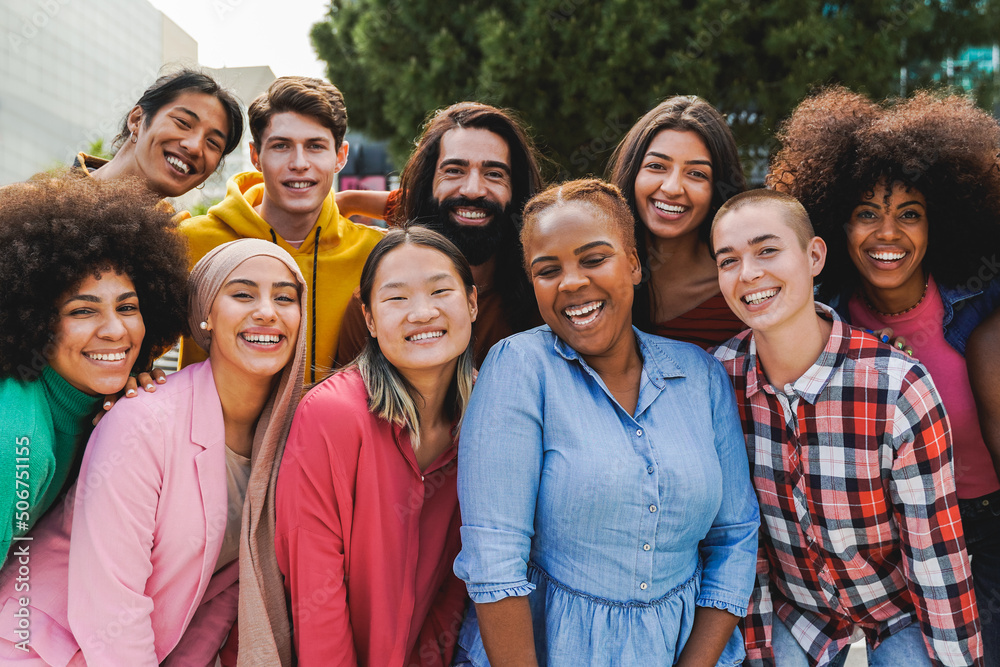Imagine a way of life where beauty and identity are expressed through something truly unique, something that shapes a person's very appearance in a way that captures attention from far and wide. For some communities, this means embracing traditions that seem quite different from what many of us might be used to, traditions that have been passed down through generations. We're talking about groups of people who, for various cultural reasons, appear to have remarkably long necks, a sight that often sparks curiosity and wonder among those who encounter them. This appearance, you know, is a deeply rooted part of their heritage and tells a story of resilience and identity.
These fascinating communities, particularly those known as the Kayan people, have a history that stretches back through time, with their roots firmly planted in parts of Southeast Asia. Their way of life, actually, is quite interwoven with the practices that contribute to this distinctive look. It's a practice that involves more than just aesthetics; it's about belonging, about cultural pride, and about carrying on the ways of their ancestors. So, when we think about people with long necks, we're really thinking about a rich tapestry of human experience.
Our discussion will take a closer look at these remarkable individuals, exploring where they come from, why they adopt these unique customs, and what their daily existence is like. We'll also touch upon how the outside world, particularly through tourism, has interacted with their traditions, and, you know, what that means for their future. It's an opportunity to gain a bit of appreciation for the diverse ways human beings express themselves and maintain their cultural connections, more or less, in a changing world.
- Aaron Judge Ethnicity Parents Nationality
- Queen Khamyra Age
- What Are The Largest Religions In The World
- Male Cherokee Indian Names
- Nikkita Lyons Parents
Table of Contents
- What Makes Some People Have Long Necks?
- How Do Neck Rings Shape Identity?
- Life in the Villages - Daily Rhythms and Cultural Expressions
- Tourism's Influence - A Double-Edged Blade for People with Long Necks
- What About the Longest Necks Recorded?
What Makes Some People Have Long Necks?
When people think about individuals with notably long necks, their thoughts often turn to the Kayan people, sometimes called the Padaung, or even, you know, the "giraffe women" in some travel writings. This group is probably the most widely recognized for this particular cultural expression. Their distinctive appearance, really, comes from a tradition that has been practiced for many, many years, shaping not just their physical form but also their group identity. It's a fascinating example of how cultural practices can become deeply ingrained in a community's very being.
The Kayan, as a whole, are an ethnic group with a fascinating story, rooted in the hills of Myanmar, also known as Burma, and stretching into neighboring Thailand. They are, in essence, a people who have maintained their customs despite various challenges over time. So, when we talk about people with long necks, we are, by and large, referring to the Kayan and their unique way of life. Their presence in these regions has, you know, contributed to a rich cultural landscape.
Their traditions, which involve wearing brass coils around their necks, are not just a casual choice; they are, in a way, a fundamental aspect of their cultural heritage. These coils, as a matter of fact, become a part of them from a relatively young age. It's a practice that distinguishes them and, for them, enhances their beauty, setting them apart from other groups. This is, basically, what makes them stand out and why so many are curious about them.
- Top Women Country Singers
- What To Wear In The 80s
- After The Wedding Netflix
- Lemon Ginger Tea And Pregnancy
- Braids Medium Hair
The Kayan People - A Look at Their Origins
The Kayan people, who are often identified as "people with long necks," have their original homeland in a place called Loikaw, a town situated in Myanmar. This area is, in essence, where you can find some of the most genuine and untouched villages belonging to this unique group. It's a place where their traditions are, you know, lived out in a way that feels very connected to their past, less influenced by the outside world in some respects.
Their numbers tell a bit of their story too. According to accounts like that from u Aung Roe in 1999, there are about 90,000 Kayan people living in Myanmar's Shan State, specifically around the Pekhon township area. Additionally, there are roughly 20,000 more scattered in other surrounding areas. These figures, you know, give us a sense of the size of this community and their geographical spread, which is pretty significant.
Over time, various circumstances, including conflicts and the search for better opportunities, have led some Kayan people to establish communities in Thailand. These settlements are mostly found in the highlands of northwestern Thailand, near the border with southeastern Myanmar. So, really, their story is one of movement and adaptation, while still holding onto their core cultural practices that define them as people with long necks.
How Do Neck Rings Shape Identity?
The practice of wearing neck rings, which gives the Kayan their notable appearance as people with long necks, is deeply intertwined with their sense of self and community belonging. It's not just a fashion statement; it's a profound cultural marker. These brass coils are, in a way, a visible sign of their heritage, something that sets them apart and helps them recognize one another as part of the Kayan family. They are, you know, a very strong symbol of who they are.
For the Kayan women, in particular, these rings are believed to enhance their beauty. The idea of what is considered beautiful can, of course, vary greatly across different cultures, and for the Kayan, this specific form of adornment is highly valued. It's a way, essentially, of expressing their femininity and their connection to their ancestral customs. This practice, therefore, shapes their identity in a very direct and visible manner, pretty much defining a part of their cultural aesthetic.
The tradition begins when girls are quite young, with more coils being added over time as they grow. This gradual process means that the rings become an integral part of their lives from childhood onward. It's a commitment that lasts a lifetime for many, and it reflects a deep respect for the traditions passed down through generations. So, in essence, the rings are not just worn; they are lived, becoming a part of the person's journey, you know, from early years.
The Brass Coils and Their Physical Impact on People with Long Necks
The brass coils that are so characteristic of the Kayan women, making them appear as people with long necks, are quite substantial. They are, in fact, rather weighty, and this weight has a noticeable physical effect on the wearer over time. It's not that their actual neck bones get longer; instead, the coils push down on their collarbones and the upper parts of their ribs. This downward pressure, you know, creates the illusion of an elongated neck, as the shoulders appear to drop lower.
This physical transformation is a gradual process, as the coils are added incrementally. The way it works, basically, is that the heavy brass slowly but surely compresses the bones and muscles around the upper torso. This means that the women's bodies adapt to the coils over many years. It's a testament, in a way, to the human body's ability to adjust to consistent pressure, even something as significant as these coils, you know.
It's important to understand that this is a cultural practice involving adornment and body modification, rather than a natural, inborn physical trait. While some texts might suggest a natural elongation, the widely accepted understanding, and what is seen among the Kayan, is that the rings themselves create the visual effect. So, when we speak of people with long necks in this context, we are referring to the striking appearance created by these traditional brass coils, which is, actually, quite a unique sight.
Life in the Villages - Daily Rhythms and Cultural Expressions
Life for the Kayan people, including those recognized as people with long necks, unfolds within their close-knit villages, often surrounded by natural beauty. Their daily routines are typically centered around traditional activities that have sustained their communities for generations. This might involve farming, weaving, or crafting, all of which are essential for their livelihood and maintaining their way of life. It's a rhythm that is, you know, deeply connected to the land and their ancestral practices.
Their cultural expressions are rich and varied, going beyond just the neck coils. They have their own distinct language, traditional music, and storytelling that transmit their history and values from one generation to the next. These artistic forms are, in essence, how they preserve their heritage and celebrate their identity. You can often see, for example, their weaving displaying intricate patterns that tell stories or represent aspects of their beliefs, which is pretty cool.
Challenges, however, are a part of their reality too. Like many ethnic groups, they sometimes face difficulties related to land, resources, and maintaining their cultural practices in a rapidly changing world. Despite these hurdles, they show remarkable resilience, striving to keep their traditions alive and pass them on to their children. It's a continuous effort, you know, to balance their unique way of life with the influences from outside their communities.
The communities themselves are, basically, places where family ties are very strong, and collective well-being is often prioritized. Daily life involves a lot of interaction within the village, with everyone playing a part in the community's functioning. This communal spirit is, in a way, a cornerstone of their existence, providing support and continuity for people with long necks and their families. It's a pretty cohesive social structure, in most cases.
Tourism's Influence - A Double-Edged Blade for People with Long Necks
The unique appearance of the Kayan people, particularly the women known as people with long necks, has, over time, attracted considerable attention from the outside world, especially from tourists. What started, in some cases, as refugee camps set up for displaced Kayan individuals, actually transformed into tourist attractions. This shift, you know, created a complex situation where their cultural identity became a spectacle for visitors, which is kind of a strange thing to think about.
This influx of tourism has brought both potential benefits and significant drawbacks. On one hand, it can provide an income source for the communities, allowing them to purchase necessities and, perhaps, maintain some of their traditional crafts. For example, Christine, an American lady, worked with the long neck people in Thailand, which suggests some efforts to support them through engagement. However, this economic aspect often comes with a cost, creating a sort of dependency that might, you know, make it harder for them to maintain full autonomy over their traditions.
The concern for many is that the cultural practices of people with long necks might become commodified, losing some of their original meaning and becoming primarily a performance for visitors. There's a fine line, basically, between cultural exchange and cultural exploitation. It's a challenge for these communities to navigate, ensuring that their heritage is respected while also benefiting from interactions with the wider world. It's a pretty delicate balance, to be honest.
Visiting the Kayan - What to Keep in Mind
For those interested in visiting the Kayan people, sometimes referred to as the "long neck tribe" in Thailand, it's really important to approach the experience with respect and thoughtfulness. Understanding their origins and the reasons behind their traditions can help foster a more meaningful interaction. Knowing that places like Loikaw in Myanmar are considered the original homes of the Kayan, where you might find more authentic villages, is a good starting point, you know, for a more genuine experience.
When you visit, try to engage with the people as individuals, rather than just viewing them as an attraction. Learning about their daily life, their challenges, and their artistic expressions can provide a much deeper appreciation for their culture. It's about recognizing their humanity and their right to maintain their traditions on their own terms. This approach, basically, helps to ensure that your visit contributes positively to their lives, rather than just being a quick photo opportunity.
Supporting ethical tourism initiatives, where the benefits genuinely reach the community and their cultural integrity is prioritized, is also a good idea. This means looking for opportunities where the people themselves have control over how their culture is presented and how the income is used. It's a way of showing solidarity and respect for these unique people with long necks, ensuring their traditions can continue to thrive, which is, you know, something we should all aim for.
What About the Longest Necks Recorded?
The fascination with people with long necks has, at times, extended to questions about who might have the very longest. The Guinness Book of World Records, for instance, featured individuals with the longest neck rings in the world in 2018. This kind of recognition, you know, brings even more attention to the Kayan women and their extraordinary cultural practice. It highlights how their traditions create a visual effect that is, in a way, truly remarkable and stands out globally.
These neck rings, or coils as they are also known, are what contribute to the appearance of great length. The records, therefore, aren't about naturally occurring long necks in the way we might think of, say, a giraffe. Instead, they celebrate the extent of the cultural modification and the striking visual outcome achieved by the Kayan women through generations of this practice. It's, essentially, a testament to a very specific human tradition.
The presence of these records means that the Kayan people, and their unique way of life, have gained a certain level of global recognition. It puts a spotlight on their culture, prompting more people to learn about them and their customs. This attention can be a mixed blessing, of course, but it certainly ensures that their story as people with long necks is heard far and wide, which is, you know, quite something.
Beyond the Coils - Natural Variations in Neck Length
While the Kayan people are famous for their culturally elongated necks due to brass coils, it's also worth remembering that human bodies naturally vary in many ways, including neck length. Some people might, you know, simply have a longer neck due to their individual genetic makeup or how their muscles and bones developed. This is separate from any cultural practice involving rings or other external means.
Factors like genetics, the way muscles grow, and even posture can influence how long a person's neck appears. These are, essentially, natural biological differences that occur across the human population. So, it's not uncommon to see people with slightly longer or shorter necks without any external intervention. This is, basically, just part of the wide range of human physical characteristics that make each of us unique, you know.
Understanding this distinction helps us appreciate both the incredible diversity of natural human forms and the fascinating ways cultures choose to adorn and shape the body. The Kayan practice, therefore, stands as a unique cultural expression, distinct from the natural variations in neck length found in people generally. It's a way, more or less, to differentiate between innate traits and chosen traditions.
- Lowest Temperature Today Usa
- God Complex
- Lil Durk Wife
- Lemon Ginger Tea And Pregnancy
- Bill Gates Ai Will Replace


